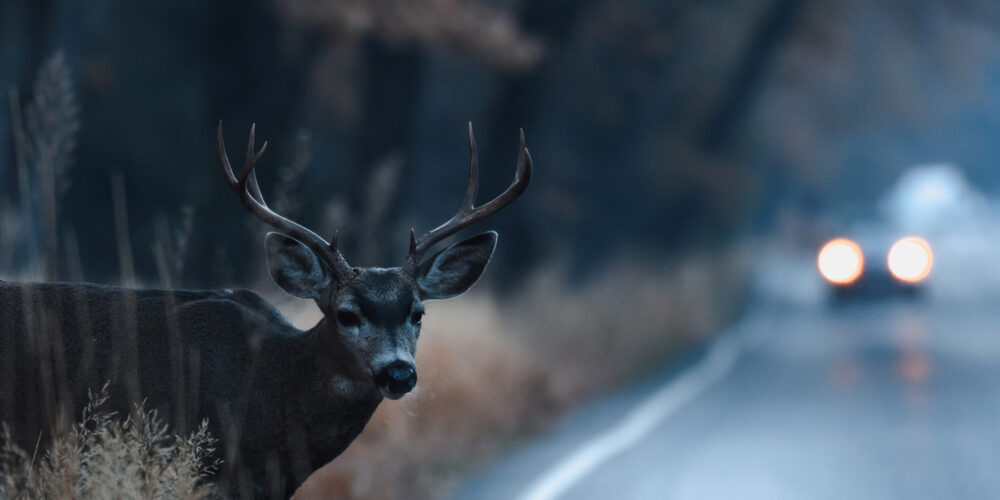As the days grow shorter, the leaves begin to change, and there’s a nip in the air. Deer season has opened in many states, and that means an increase in antlered traffic for those of us on the roads as well as in the woods. The United States is home to around 32 million white-tailed deer (Odocoileus virginianus), and another 3.5 million black-tailed or mule deer (Odocoileus hemionus). While a huge number of sporting folks will enjoy spending the upcoming fall and winter months searching for deer, many others hope to avoid them at all costs.
Deer hunters spent roughly $23 billion pursuing their quarry in 2020, from license fees to purchasing gear, as well as travel and lodging. On the other hand, the insurance industry reports approximately $1 billion in deer-related losses annually, the result of roughly 1.5 million individual claims. Hunters spend considerably more per year chasing deer, but they probably enjoy themselves a lot more than the folks making a claim with their insurance company!
White-tail populations are spread throughout the United States, but as humans continue to develop former deer habitat into suburbs and as cities spread ever outward, people encounter deer on a more frequent basis. Bordering on being a nuisance, urban and suburban deer outnumber populations found elsewhere in my state. I’ve hunted in upstate New York for nearly 30 years, but the biggest buck I’ve personally encountered was seen in my suburban neighbor’s yard a couple of years ago, browsing at their bird feeder!
Deer are naturally most active and dawn and dusk, but as the seasons change from summer to fall, their activity becomes a little more intense. The heat is on to find a mate and to find dwindling food resources, which means they’re more likely to leave traditional areas of cover (like the woods) and be on the move, crossing roads and even highways. Increased deer traffic in low-light conditions, along with the greater overlap of our “habitats,” is a recipe for disaster on the road.
Defensive driving isn’t just about other drivers and vehicles. In areas with high deer populations, self-aware drivers naturally keep watch along the roadside, looking for animals lurking in the shadows, and for their tell-tale glowing eyes after dark. The old phrase “a deer in headlights” refers to their tendency to freeze up or panic when blinded by oncoming lights. Those eyes are tuned for low-light conditions, so when your bi-xenon HID or LED-upgrade headlamps suddenly shine directly in them, it’s even more disorienting for them than it is for the rest of us!
When it comes to running deer, another old adage I’ve often heard is that “you won’t hit the deer you see … you’ll hit the one behind her.” As herd animals, deer (especially females) often travel together. White-tailed deer are named for the prominent white fur on their rump, and when startled, that furry flag of a tail stands high as a warning to others. If a deer crosses in front of you, and her tail is up, there’s a good chance it’s for the benefit of another deer behind her. While your attention is diverted by the “near-miss,” you’re liable to hit (or be hit by) the next deer in line. This is one of many reasons that when confronted with the choice of hitting the deer in front of you or swerving, sometimes it’s safer to take the hit.
In most deer-strike claims, damages are limited to the front bumper, radiator/grille, lights and hood. Depending on the angle of the hit, deer also might strike or “tumble” down the side of the vehicle. Vehicles are designed to safely withstand front-end impacts greater than even the most “monster” buck, so firm braking in a straight line should be your first choice. Attempting to avoid the collision could put you off the side of the road, or head-on into oncoming vehicles. Winter conditions can make recovering from a hasty maneuver even trickier, so leave the stunt-driving to the movie stars!













